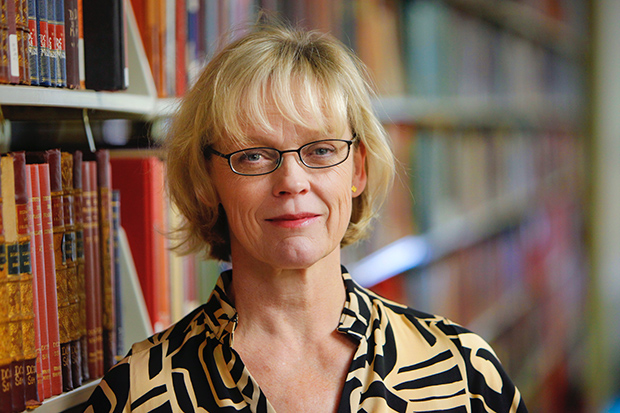How livestreaming became a terrorist's tool
Brandeis politics professor Jytte Klausen comments on the use of livestreaming in the terrorist attacks carried out on two mosques in New Zealand
 Photo/Mike Lovett
Photo/Mike LovettLawrence A. Wien Professor of International Cooperation Jytte Klausen
A group of right-wing extremists attacked two mosques in New Zealand on March 14, an act of terror that is currently being called “one of New Zealand’s darkest days.”
Jytte Klausen is a politics professor at Brandeis University studying jihadism and radicalization and the director and lead researcher for the Western Jihadism Project, a web database designed to study Al-Qaeda and ISIS-inspired terrorist offenders in Western Europe, the Antipodes, Canada, and the United States.
Klausen believes there are a number of parallels, particularly the use of
BrandeisNOW spoke to Klausen to learn more:
BrandeisNOW: Do you see parallels in the way the perpetrators of the New Zealand attacks carried out their acts of terror, particularly with the use of a
Jytte Klausen: Yes, this is an example of a far-right extremist imitating ISIS. For example, Mohamed Merah, a terrorist who carried out multiple acts in Lyon France (in 2012) used a GoPro camera to record and publicize his crimes. This attack in New Zealand is a complete copycat incident. It’s the type of insurgency-style guerilla warfare that ISIS carries out in Western Europe.
BrandeisNOW: Was Mohamed Merah the first example of terrorists recording their attacks on video?
JK: Merah really is the first example. He was a killer who carried out attacks on Jewish people in Lyon and the surrounding areas over a week-long period in 2012. He also killed immigrant-origin soldiers in the French army.
He was extremely violent and wore a GoPro camera on his helmet while murdering people driving around on a scooter. Merah also had assistants who would take the video, download it, disseminate it and then post it online.
BrandeisNOW: How widespread are attacks like these that are recorded and subsequently posted online and what other parallels do you see between this New Zealand case and other acts of terror?
JK: There are many elements in this incident that incorporate very similar tactical elements of Mohamed Merah and other terrorists. Merah’s acts, which he captured on video and posted, came as a rolling set of attacks that occurred over a period time. Similar attacks have also occurred in Barcelona in 2017 and in Brussels in 2016 and in Paris in 2015.
What happened in New Zealand shares a parallel with these other attacks in that there was a group that meticulously planned multiple coordinated attacks, but also in the sense that there was one perpetrator who clearly intended to get caught. He used his time to get the message out.
We are also now learning that the primary attacker in New Zealand was an Australian who lived in New Zealand but recently had been traveling in Europe where he claims to have had contact with far-right extremists. He was likely not detected ahead of time because he moved from one country to another to carry out the attack. So there are many elements of this attack that we’ve seen before.
BrandeisNOW: Some people online are objecting to the use of the words “terrorist” and “terrorism” with regard to the attacks in New Zealand. Is there an actual, academic definition of the word “terrorist”?
JK: That objection is misplaced. The academic definition of what constitutes a terrorist and terrorism is violence motivated by political goals and attacks on civilians with the intent of intimidating the general public or a government. Academics and law enforcement are generally consistent in their usage of the term.
The target of terrorism is a set of victims that have been selected for their symbolic importance. Terrorists go after victims based on their symbolic value, which is why a GoPro or a live video stream is a gift to a terrorist. It’s like reality television. All terrorism is, really, is theater.
Klausen is the Lawrence A. Wien Professor of International Cooperation
Categories: General, Humanities and Social Sciences, Research





